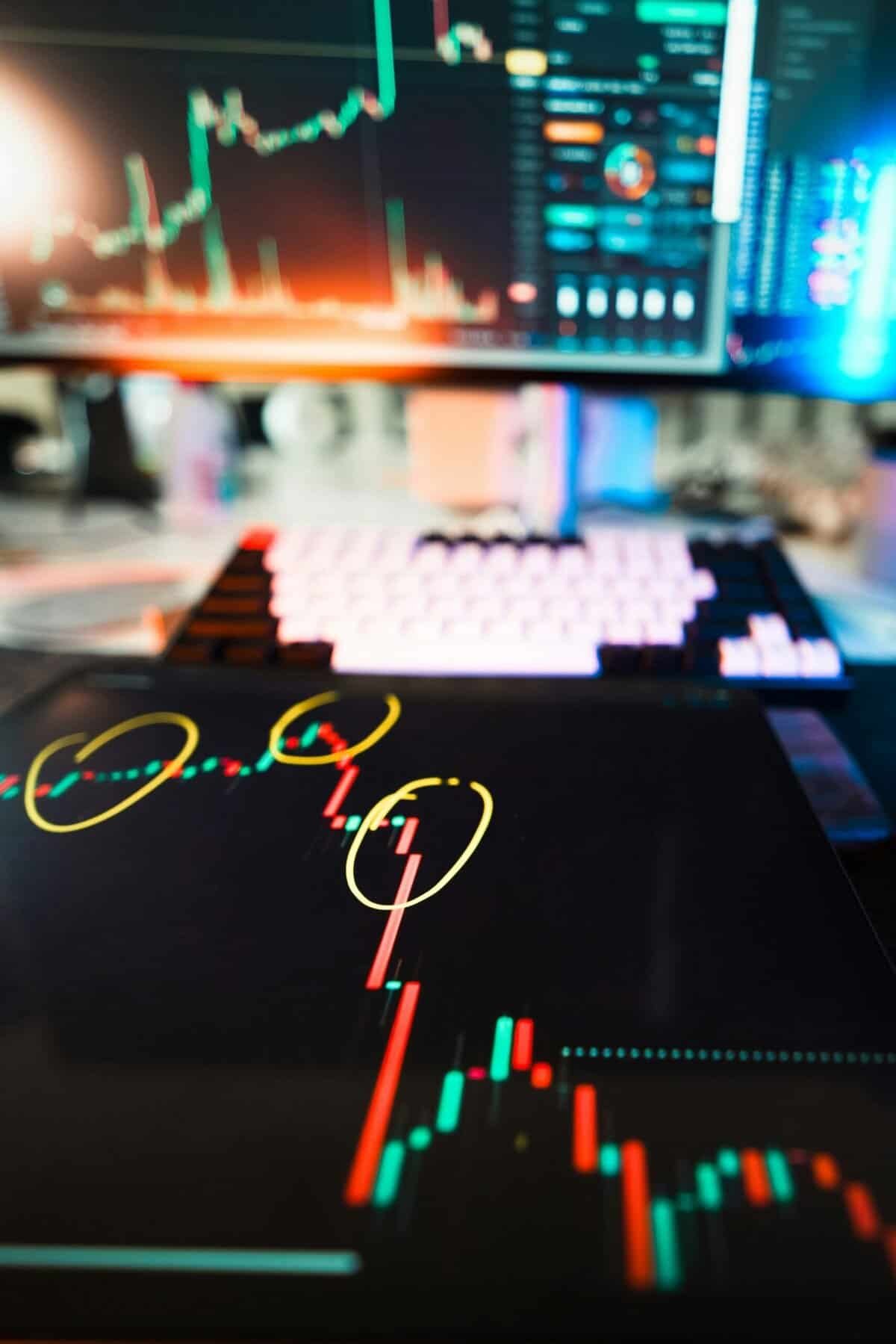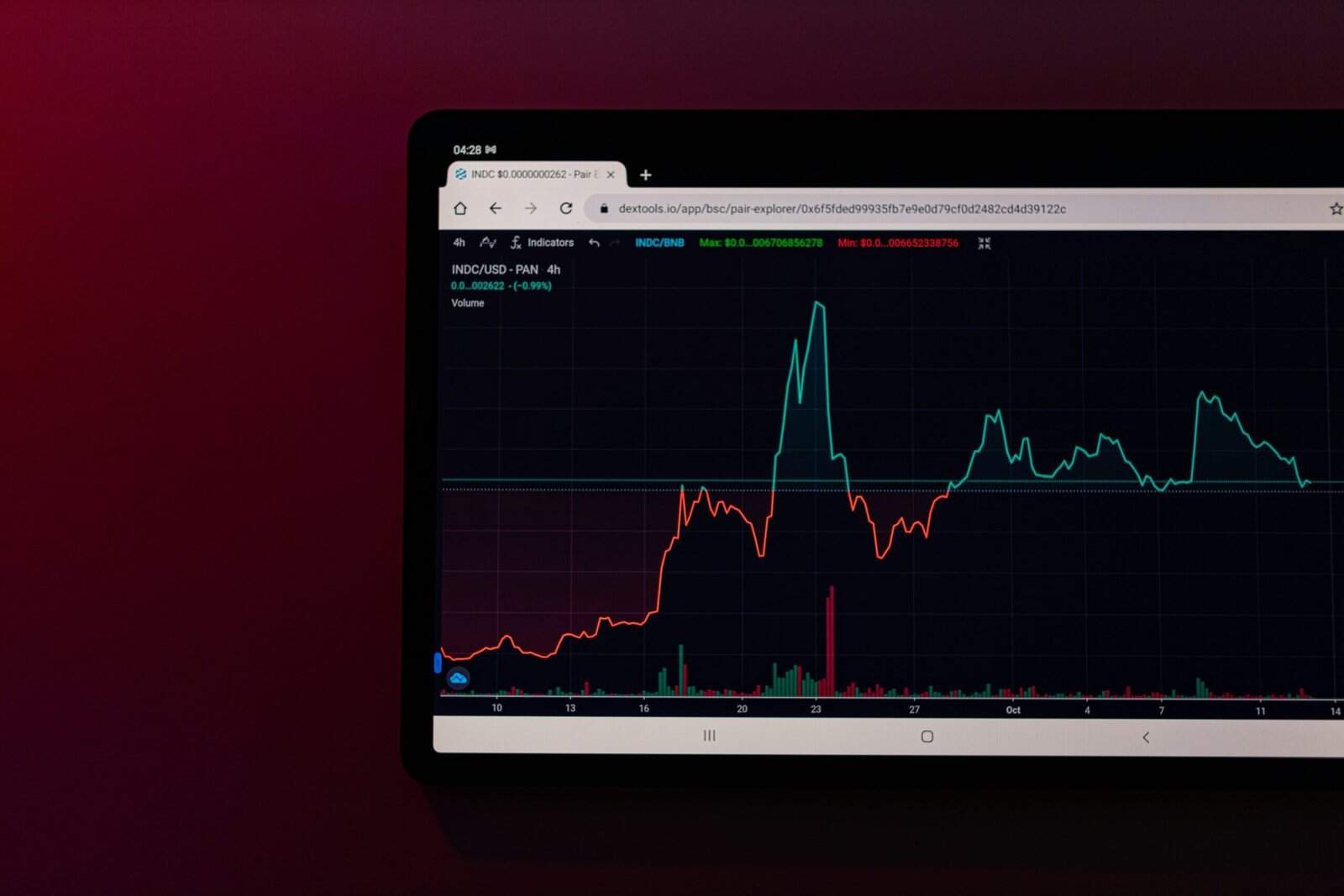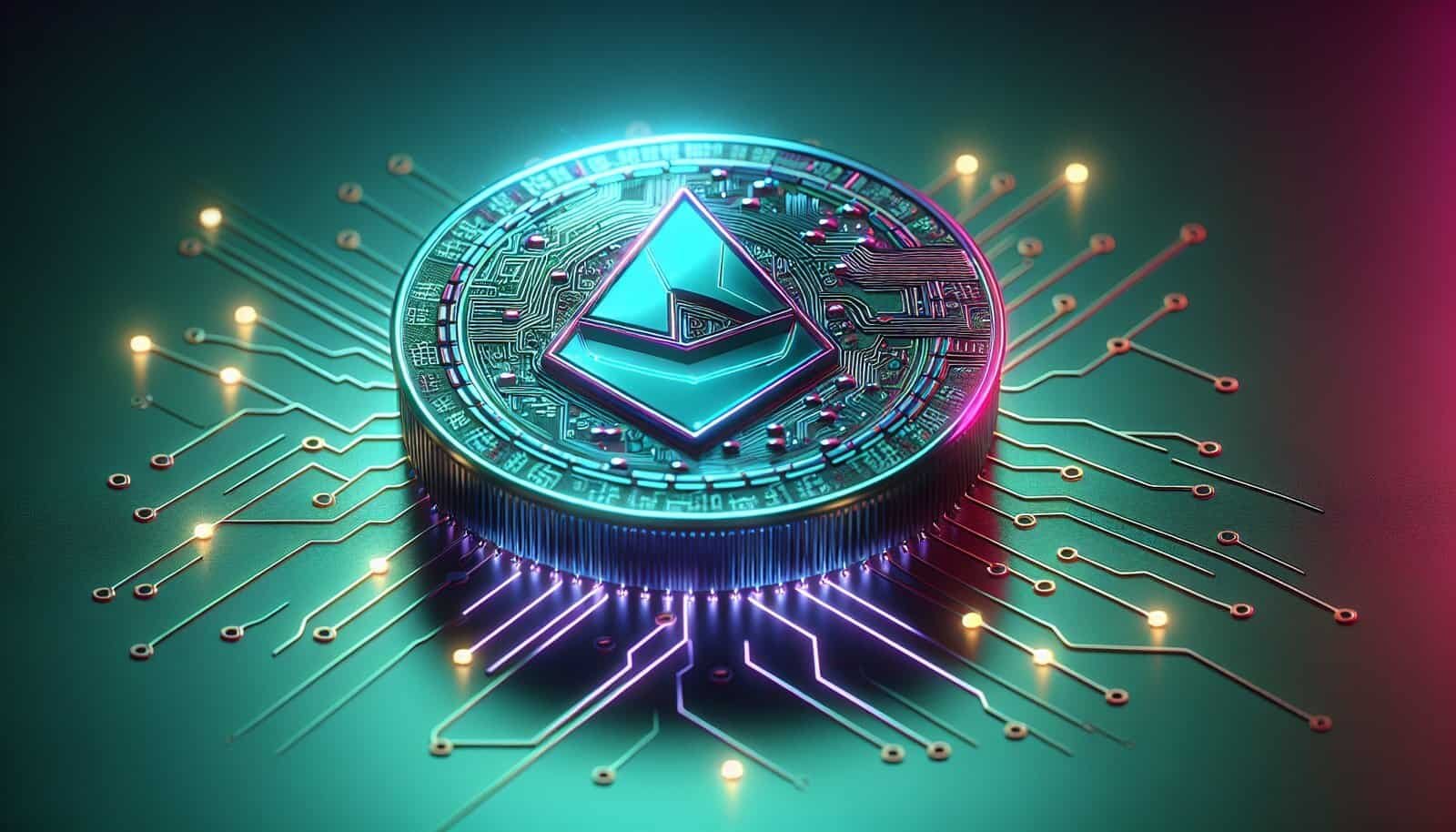Are you trying to figure out which altcoins could outperform in 2025 and how to position your portfolio accordingly?

What Are The Hottest Altcoins To Watch In 2025?
You’re likely looking for altcoins with strong fundamentals, active development, and real use cases that can survive shifting market cycles. This article walks you through the macro trends shaping performance, the coins to watch across sectors, how to evaluate them, and practical steps to research and manage risk.
Macro Trends Shaping Altcoin Performance in 2025
Understanding the macro environment will help you spot which altcoins might benefit or suffer. You should monitor liquidity, institutional adoption, regulation, and technological shifts because they influence capital flows and developer attention.
Bitcoin Dominance and ETF Effects
Bitcoin’s market position and any new institutional products will change how capital allocates across the market. If institutional interest flows primarily into Bitcoin ETFs and spot BTC, your altcoin exposure may face pressure unless specific projects show strong fundamentals.
Interest Rates and Macro Liquidity
Your risk appetite usually correlates with global liquidity and interest rates. Lower rates and abundant liquidity typically favor risk assets like altcoins, while rate hikes and tighter liquidity push capital into safe assets, reducing speculative demand.
Regulation and Institutional Adoption
Regulation could dramatically reshape which altcoins are accessible to institutions and retail platforms in 2025. You should watch regulatory clarity on securities, custody rules, and exchange approvals since these factors determine listing eligibility and institutional flows.
Technological Shifts: zk, L2s, and AI Integration
Advances in zero-knowledge proofs, rollups, and AI integration will define winners in scalability and real-world data services. You want to focus on projects that actually ship scalable solutions, attract developers, and integrate with major ecosystems.
How to Evaluate an Altcoin: Key Metrics
Picking altcoins requires a mix of on-chain analysis, off-chain fundamentals, and sense-checking tokenomics. Below is a table summarizing key evaluation metrics you should use.
| Metric | What it tells you | How to use it |
|---|---|---|
| Active developers | Project momentum and ongoing work | Check GitHub, commits, releases; more activity often means higher chance of delivery |
| TVL / Usage | Real demand for protocol | TVL increases indicate real use; check composition and how much is native vs. wrapped |
| Tokenomics | Supply dynamics and incentives | Look at inflation, vesting, and burning mechanisms to estimate dilution |
| Liquidity & Market Depth | Ease of entry/exit | Higher liquidity reduces slippage and manipulation risk |
| Community & Governance | Long-term sustainability | Active community and clear governance processes help resilience |
| Partnerships & Integrations | Real-world adoption | Integrations with exchanges, wallets, and dev tools increase stickiness |
| Security & Audits | Risk profile | Multiple audits and bug-bounty programs reduce exploit risk |
Fundamentals
You should prioritize projects solving a clear problem with a sustainable monetization path. Fundamentals include the project’s roadmap, team credibility, partnerships, and traction.
On-chain Metrics
On-chain metrics like active addresses, transaction volume, and staking ratios give you current usage signals. These metrics can confirm whether the protocol sees real demand or speculative trading.
Developer Activity and Governance
Developer activity indicates future feature rollouts and maintenance, while governance mechanisms determine community control and token-holder influence. You should favor projects with transparent governance and engaged developer ecosystems.
Tokenomics and Supply Dynamics
Token supply schedules, inflation, and lockups affect long-term value. You’ll want to know when large unlocks occur and how tokens are distributed between team, investors, and community.
Market Structure and Liquidity
Look at exchange listings, volume, and order book depth. Higher liquidity usually correlates with lower manipulation risk and easier portfolio adjustments.
The Hottest Altcoins to Watch in 2025
Below are categories and specific altcoins you should watch in 2025. Each selection highlights why it’s interesting and what risks to watch. This is not financial advice; use it as a starting point for your own research.
Layer 1s (Base Networks)
Layer 1 networks compete on throughput, security, and developer tooling. In 2025 you’ll likely favor chains that have clear niches or broad developer adoption.
Ethereum (ETH): Even after scaling efforts and rollups, Ethereum remains the hub for DeFi, NFTs, and smart contracts. You should watch how continued rollup adoption and proto-danksharding change fee dynamics and economic incentives.
- Risks: High fees during congestion, regulatory scrutiny in certain jurisdictions.
Solana (SOL): Known for high throughput and low fees, Solana’s ecosystem continues to grow in DeFi, NFTs, and real-time apps. You’ll evaluate Solana based on uptime improvements and developer migration.
- Risks: Network outages and centralization concerns.
Avalanche (AVAX): Avalanche’s subnets and high finality times make it attractive for enterprise and gaming projects. You should watch subnet adoption and cross-chain composability.
- Risks: Competition from other L1s and dependency on native ecosystem activity.
Aptos (APT) and Sui (SUI): Emerging L1s with focus on performance and developer ergonomics. If you value fast transactions and novel VM improvements, these are worth following.
- Risks: Need to prove long-term developer and user retention.
Layer 2s and Rollups
Layer 2 solutions will be a major battleground in 2025 because they drastically reduce costs while preserving security anchored to Ethereum or other L1s.
Polygon (MATIC): Offers multiple scaling solutions including zk and optimistic rollups. You’ll monitor real adoption of its zk suite and interoperability across chains.
- Risks: Competitive pressure from native rollups and centralization concerns.
Arbitrum (ARB) and Optimism (OP): Leading optimistic rollups with broad DeFi adoption. Your focus should be on TVL growth, developer tooling, and governance decisions.
- Risks: Economic model sustainability and sequencing centralization.
StarkNet (STRK) and zkSync (if tokenized): zk-rollups provide privacy, scalability, and low fees. You should track zk implementation maturities and the pace of developer migration.
- Risks: Complexity of zk tech and adoption speed.
Interoperability & Cross-Chain
Interoperability is crucial as users and assets move between chains. Cross-chain protocols and hubs can benefit from increased composability.
Polkadot (DOT): A parachain architecture that promotes interoperability through Relay Chain security. You should watch new parachain projects and cross-chain messaging progress.
- Risks: Complexity and reliance on parachain auctions.
Cosmos (ATOM): Focuses on sovereign chains and IBC (Inter-Blockchain Communication). You’ll want to see how more chains adopt IBC and real cross-chain apps emerge.
- Risks: Security models differ across sovereign chains.
Celestia (TIA): Modular design separating consensus and data availability could be a backbone for rollups. You should watch integration with rollup ecosystems.
- Risks: Adoption vs. integrated L1 architectures.
Oracles & Data Infrastructure
Reliable off-chain data and indexing are must-haves for broad DeFi and real-world use cases.
Chainlink (LINK): Market leader in decentralized oracles and data feeds. You’ll track expansion into hybrid smart contracts and new data products, which could keep it central to DeFi growth.
- Risks: Centralization around certain node operators and regulatory scrutiny.
The Graph (GRT): Indexing protocol for blockchain data. Your attention should be on indexing across chains and improvements in query efficiency.
- Risks: Competition from proprietary indexing and on-chain data access models.
API3 / Band / UMA: Niche data protocols with specialized use cases. You should align each with the specific data needs of target applications.
DeFi, Liquid Staking, and Yield
DeFi protocols that provide composable liquidity and sustainable yields tend to capture large TVL if they maintain security and utility.
Lido (LDO) and Rocket Pool (RPL): Liquid staking protocols that unlock staked ETH liquidity. You should watch staking incentives, regulatory stances on staking services, and how liquid staked ETH integrates with DeFi.
- Risks: Smart contract exploits and regulatory pressure on staking derivatives.
Aave (AAVE) and Compound (COMP): Lending markets with governance tokens. Their role in money markets makes them central to DeFi yield generation.
- Risks: Smart contract risk and potential undercollateralization during stress.
Uniswap (UNI) and Curve (CRV): Decentralized exchanges and AMM liquidity for trading. Watch upgrades, concentrated liquidity models, and fee structures.
- Risks: MEV, front-running, and competition from centralized exchanges.
AI & Web3 Tokens
AI integration with blockchain is an emerging theme in 2025, especially for data marketplaces and agent-based computation.
Fetch.ai (FET) and SingularityNET (AGIX): Protocols that target decentralized AI services and marketplaces. You should track real-world AI applications built on-chain and off-chain compute integrations.
- Risks: Competition from centralized AI providers and unclear monetization.
Render (RNDR): Decentralized GPU rendering for content and AI workloads. Rendering and AI workloads have predictable demand if the network continues to onboard studios and creators.
- Risks: Reliance on node operator quality and centralized alternatives.
Ocean Protocol (OCEAN): Data marketplace enabling monetization of datasets for AI model training. You should look for enterprise datasets and privacy-preserving data-sharing solutions.
- Risks: Data quality and compliance challenges.
Web3 Gaming and Metaverse
Gaming tokens get attention when successful play-to-earn economies and user-owned assets generate real demand.
ImmutableX (IMX) and Gala (GALA): Platforms focused on NFT gaming and scalable trading. You should monitor user metrics, partnerships with studios, and real monetization metrics.
- Risks: Game economies can quickly deflate if incentives are misaligned.
The Sandbox (SAND) and Decentraland (MANA): Metaverse platforms with land and experience economies. Watch active monthly users, partner brands, and virtual real estate liquidity.
- Risks: Speculative land markets and engagement retention.
Privacy and Security
Privacy solutions maintain relevance due to demand for confidential transactions and compliance-aware privacy models.
Monero (XMR) and Zcash (ZEC): Privacy coins that offer transaction confidentiality. You should be aware of regulatory pressures and exchange listings that could affect liquidity.
- Risks: De-listing risk and regulatory scrutiny.
Secret Network (SCRT): Privacy-preserving smart contracts that let dApps keep data confidential. You’ll want to see enterprise and DeFi adoption for sensitive use cases.
- Risks: Complexity of privacy tech and performance trade-offs.

A Comparative Table of Notable Altcoins
| Coin | Ticker | Sector | Why to Watch | Key Risk |
|---|---|---|---|---|
| Ethereum | ETH | L1 / Smart Contracts | Largest dev ecosystem, rollups expand scalability | High fees at peak demand, regulatory scrutiny |
| Solana | SOL | L1 | High throughput, low fees | Network stability & centralization |
| Polygon | MATIC | L2 & Scaling | Multi-solution scaling stack | Competes with native rollups |
| Arbitrum | ARB | L2 | Strong DeFi TVL on optimistic rollups | Sequencer centralization |
| Chainlink | LINK | Oracles | Dominant oracle network, expanding products | Concentration risk |
| Cosmos | ATOM | Interoperability | IBC-driven cross-chain apps | Fragmented security models |
| Lido | LDO | Liquid Staking | Largest liquid staking protocol | Smart contract & regulatory risks |
| Aave | AAVE | DeFi | Leading lending market | Smart contract and liquidity stress |
| Render | RNDR | AI / Compute | GPU marketplace for rendering/AI | Competes with cloud providers |
| Celestia | TIA | Data Availability | Modular design for rollup scalability | Needs broad ecosystem adoption |
Risk Management and Portfolio Construction
You should always manage risk through position sizing, diversification, and exit planning. Altcoins are volatile and can move quickly.
Position Sizing and Diversification
Decide how much of your total portfolio you want in altcoins versus core holdings like BTC and ETH. Use small position sizes for speculative tokens, and diversify across sectors (L1s, L2s, oracles, AI, DeFi) to reduce idiosyncratic risk.
Entry and Exit Strategy
Set clear rules for entries, stops, and profit-taking. You can use dollar-cost averaging (DCA) to reduce timing risk and trailing stops to protect gains. Always identify scenarios that would cause you to reassess a position.
Rebalancing and Tax Considerations
Regularly rebalance to your target allocation and track taxable events. You should keep records for capital gains and be aware of tax-loss harvesting opportunities if markets pull back.
Security Best Practices
Use hardware wallets for long-term holdings, enable multi-factor authentication, and prefer reputable custodians for institutional-sized positions. You must assume smart contract risk for on-chain protocols and limit exposure accordingly.

Practical Steps to Research and Buy Altcoins
You should follow a repeatable research process to avoid emotional decisions.
Step 1 — Read the Whitepaper and Roadmap
Understand the protocol’s problem, solution, token utility, and roadmap milestones. A clear whitepaper and realistic roadmap are positive signals.
Step 2 — Check Code and Developer Activity
Review GitHub, recent commits, and the rate of pull requests. Projects with sustained development and transparent issue tracking have higher reliability.
Step 3 — Assess On-Chain Usage
Look at active addresses, transaction counts, TVL for DeFi protocols, and staking ratios. Real usage beats hype.
Step 4 — Review Tokenomics and Vesting
Analyze token distribution, upcoming unlocks, and inflation schedules to forecast dilution and selling pressure.
Step 5 — Community and Governance
Join Discord, Telegram, and governance forums to gauge community health and transparency. You’ll learn about token-holder sentiment and governance decision patterns.
Step 6 — Security and Audits
Confirm the project has undergone reputable audits and runs bug-bounty programs. That doesn’t eliminate risk but reduces the probability of catastrophic exploits.
Step 7 — Use Reputable Exchanges and Tools
Buy tokens on reputable exchanges or DEXs with sufficient liquidity. Use on-chain analytics tools like Dune, Nansen, or Glassnode for deeper insight.
Scenarios to Watch in 2025
You should prepare for multiple macro scenarios as they will affect altcoin performance differently.
Bull Case
If liquidity remains high, regulation is clear, and rollups/zk tech deliver on promises, you’ll see significant capital rotation into utility-driven altcoins, especially L2s, AI tokens, and data infrastructure.
Steady Growth Case
If macro conditions are stable but not exuberant, you’ll see slow but steady adoption. Projects with clear product-market fit and measurable usage will outperform purely speculative tokens.
Bear Case
If interest rates rise sharply, or regulation restricts token listings and staking services, risk assets will struggle and many altcoins could retrace heavily. In this case, you should preserve capital and increase focus on quality and liquidity.

Checklist: Quick Questions Before You Buy
You should run through this checklist for any altcoin you consider buying.
- Is the problem the project solves real and meaningful?
- Does the token have clear utility or governance functions?
- Are developers actively building and shipping?
- Is there credible audit coverage and security practices?
- How deep is the liquidity and where is it listed?
- Are there upcoming token unlocks or dilution events?
- How large and engaged is the community?
- What macro scenarios would cause your thesis to fail?
Final Thoughts
You need to balance ambition with discipline when chasing the hottest altcoins for 2025. Focus on projects that solve real problems, show measurable usage, and have teams that consistently ship. Diversify across sectors—scaling, interoperability, oracles, AI, and DeFi—to reduce single-point risks. Use systematic research, monitor macro trends, and protect your capital with strict risk management.
If you keep these frameworks in mind and continuously update your research as the market evolves, you’ll be better positioned to spot the altcoins that genuinely have the potential to matter in 2025.

